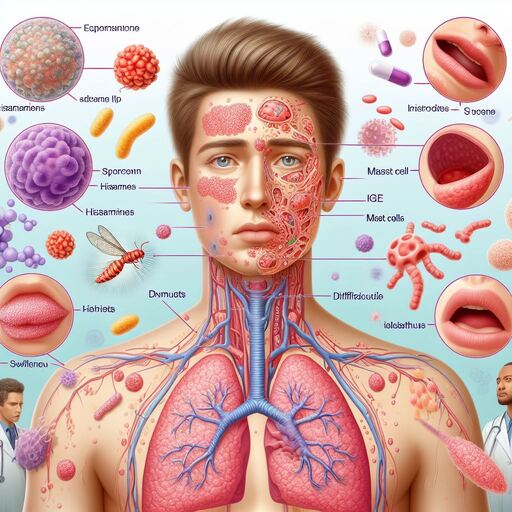Rapid Response Saving Lives in the Face of Anaphylaxis
Rapid Response Saving Lives in the Face of Anaphylaxis
Anaphylaxis is a severe and potentially life-threatening allergic reaction that demands swift and decisive action. In this article, we explore the critical importance of rapid response strategies in saving lives when confronted with anaphylaxis.
Understanding Anaphylaxis
Anaphylaxis is an acute allergic reaction triggered by exposure to allergens such as foods (e.g., peanuts, shellfish), medications (e.g., penicillin), insect stings (e.g., bee venom), or latex. The immune system reacts excessively to these allergens, releasing a cascade of chemicals that can cause a rapid onset of severe symptoms affecting multiple organ systems.
Recognizing the Signs and Symptoms
The key to effective rapid response is prompt recognition of anaphylaxis symptoms. These may include:
- Difficulty breathing, with wheezing or shortness of breath
- Swelling of the face, lips, tongue, or throat
- Hives or widespread skin rash
- Rapid heartbeat
- Drop in blood pressure leading to dizziness or fainting
- Nausea, vomiting, abdominal cramps, or diarrhea
The onset of symptoms can be sudden and progress rapidly, necessitating immediate action.
Rapid Response Saving Lives in the Face of Anaphylaxis
The Role of Epinephrine
Epinephrine (adrenaline) is the first-line treatment for anaphylaxis and is administered via an auto-injector device (e.g., EpiPen). Epinephrine acts quickly to reverse symptoms by constricting blood vessels, relaxing airway muscles, and improving blood circulation. It is essential to administer epinephrine promptly at the first signs of anaphylaxis, even before calling emergency services.
Steps for Rapid Response
- Administer Epinephrine: If an individual shows signs of anaphylaxis (e.g., difficulty breathing, swelling), use an epinephrine auto-injector immediately. Inject into the outer thigh and hold for several seconds. Seek emergency medical help immediately after administering epinephrine.
- Call Emergency Services: After administering epinephrine, call 911 or emergency services without delay. Inform them of the situation and follow their instructions.
- Provide Supportive Care: While waiting for emergency responders, help the individual lie down, monitor their breathing and vital signs, and be prepared to perform CPR if necessary.
- Follow Up with Medical Care: After an anaphylactic episode, seek follow-up care with an allergist or immunologist to identify triggers, receive further treatment recommendations, and obtain a prescription for additional epinephrine auto-injectors if needed.
Community Awareness and Preparedness
Rapid response to anaphylaxis requires not only individual readiness but also community awareness and preparedness. Schools, workplaces, restaurants, and public spaces should have protocols in place for managing allergic emergencies, including access to epinephrine auto-injectors and staff trained in recognizing and responding to anaphylaxis.
Empowering Individuals and Saving Lives
By raising awareness about anaphylaxis and promoting rapid response strategies, we empower individuals and communities to take proactive steps in saving lives. Timely administration of epinephrine is crucial in preventing the progression of anaphylaxis and improving outcomes.
In conclusion, rapid response is the cornerstone of anaphylaxis management, emphasizing the critical importance of immediate action in the face of allergic emergencies. By understanding the signs, preparing for emergencies, and advocating for widespread awareness, we can save lives and ensure a safer environment for individuals at risk of anaphylaxis.
Rapid Response Saving Lives in the Face of Anaphylaxis

